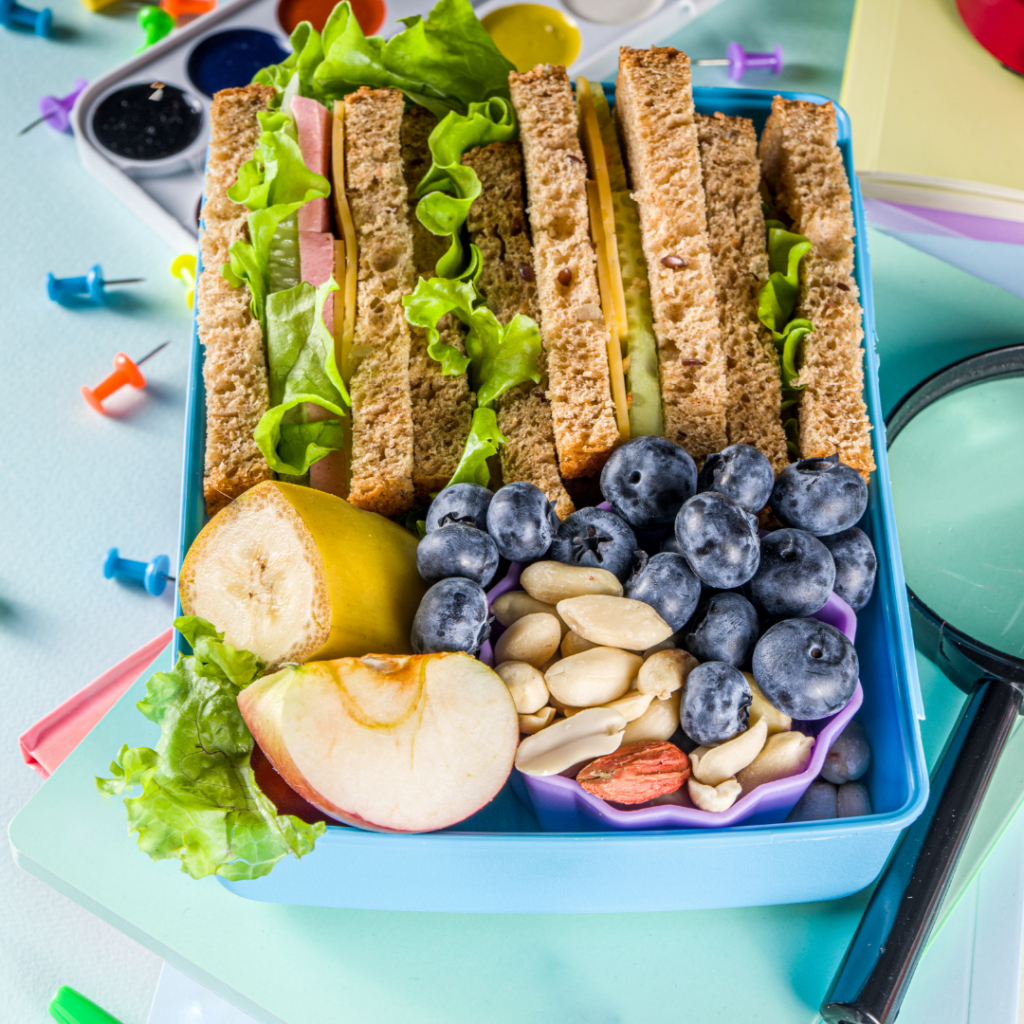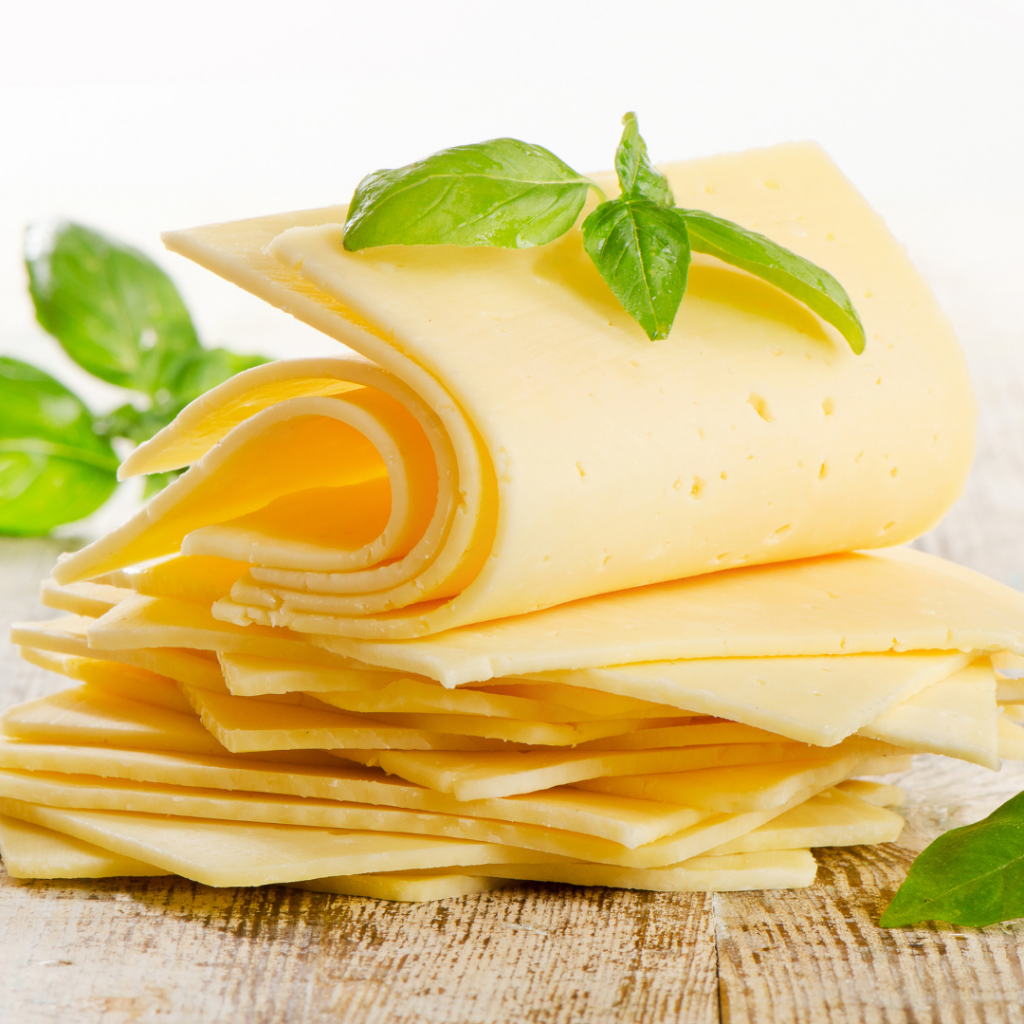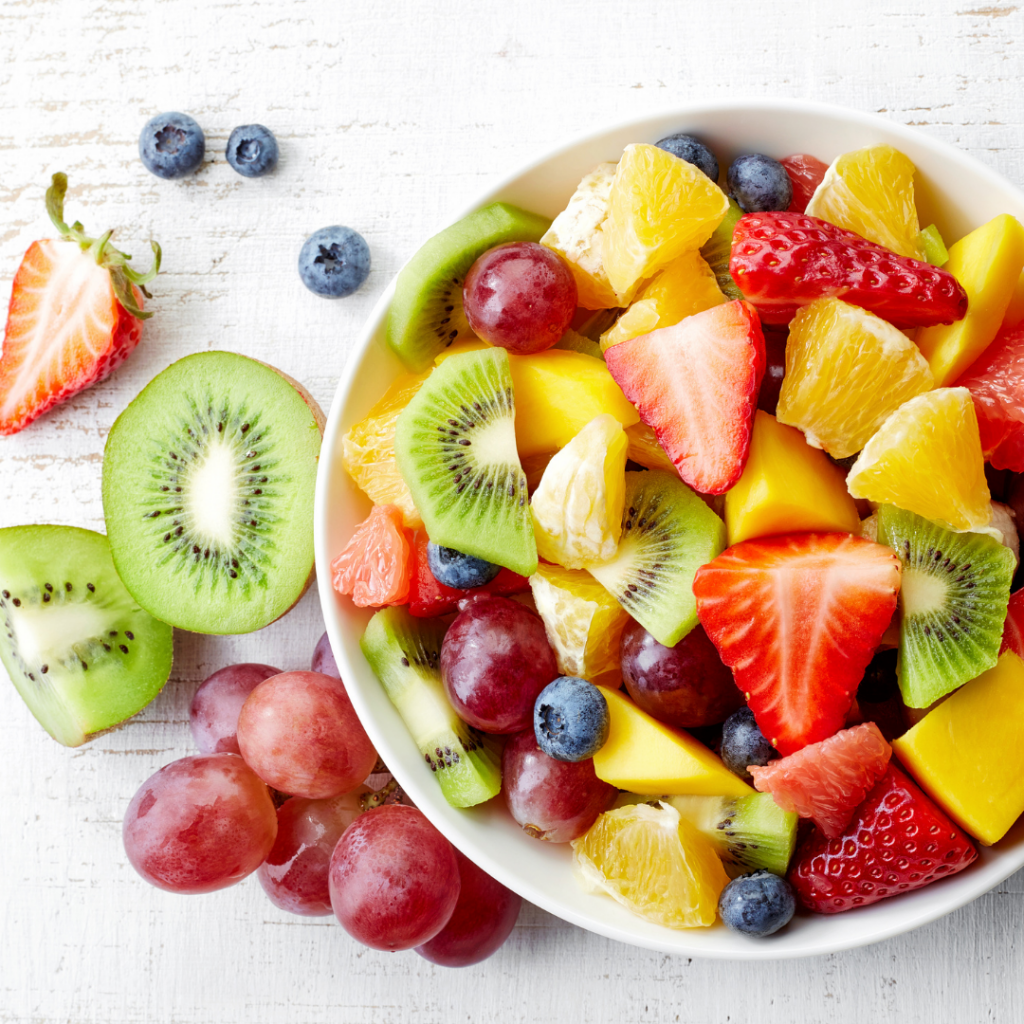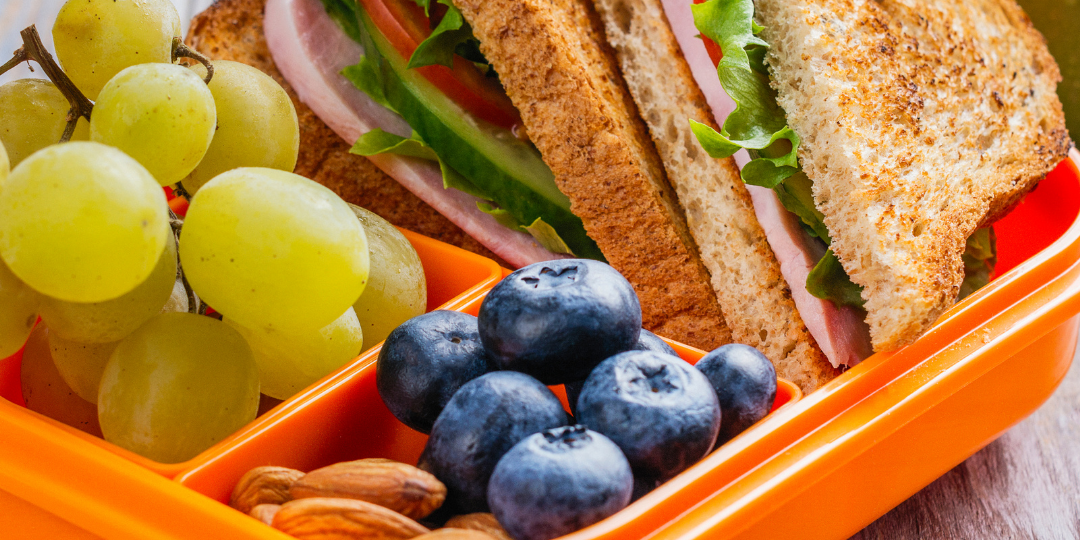It’s that time again – kids are back to school!!
The dread of the early mornings, the uniform battles and also – making the school lunches…
Packing a teeth-friendly school lunchbox doesn’t have to be expensive or time-consuming as long as you plan ahead, get used to a little nightly chopping action, and try to make it fun. We’ve assembled the 5 friendliest food groups for your kids’ teeth and lots of tips for packing fun and teeth-friendly ideas into their school lunchbox.

Veggies
Remember to include vegetables in your child’s lunch box every day. Encourage children to enjoy the crunch and colour of raw vegetables. Try salad or grilled vegetables such as capsicum or eggplant in your rolls or sandwiches. Try vegetable sticks with dips, or a container of mixed raw vegetables.
Try including:
- whole small carrots or cut up carrot sticks
- strips of yellow, red or green capsicum
- cherry tomatoes
- Roma tomatoes
- whole green beans
- a handful of snow peas
- small Lebanese cucumbers or cut up cucumber sticks
- celery sticks
- mushrooms
- peas in the pod
- corn on the cob or a small container of canned corn (no added salt)
- grilled or roasted vegetables
- grated carrot, zucchini or beetroot in bread rolls.
Some ideas to make lunch box vegies fun and interesting for kids include:
- ants on a log – fill celery sticks with low-fat cream cheese or hummus, and place sultanas across the top
- sticks ‘n’ dip combo – offer crunchy veggie sticks like carrot, green beans, capsicum, celery and cucumber with a small container of beetroot dip or tomato salsa
- corn cobs – steam corn on the cob and put in the lunchbox. Alternatively, use a small container of canned corn (no added salt)
- roast vegetable, chickpea and couscous salad – fill a small tub (with a tight fitting lid) with salad and top with a dollop of hummus or natural yoghurt
- falafel wraps – make a delicious lunch wrap with baked falafel, tomato, lettuce, cucumber and dip (for example, tzatziki, yoghurt or hummus)
- grilled or oven-baked vegetable chunks or wedges – serve with yoghurt dip
- vegie muffins – try pumpkin and zucchini, carrot and sultana, cheese and corn, pumpkin and date and sweet potato, zucchini and poppy seed. Visit the Better Health Channel recipe page for more ideas
- vegie slice – mix grated vegetables (such as zucchini) with chopped onion, cheese, flour and eggs and bake in a moderate oven until golden brown
- salad pack – fill a small tub with sugar snap peas and cherry or Roma tomatoes
Cheese
Cheese is high in calcium and phosphorus, two minerals that help keep tooth enamel strong. Cheese increases saliva in your mouth, which acts as a natural defense against cavities and gum disease.
Cutting cheese into bite-sized cubes or squares is recommended to help your kids digest better. Just remember if you’re packing a sandwich to use “whole grain” or “whole wheat” bread instead of white, because these contain more natural vitamins, minerals and fiber.

Nuts and Seeds
Nuts and seeds are arguably the healthiest protein source. They’re an excellent source of healthy fats, vitamin D, calcium, fiber and folic acid. Folic acid plays a major role in preserving gum tissues and preventing periodontal disease.
Despite being rich in Vitamin E, the shape and texture of almonds put damaging stress on teeth when kids bite down. So if your kids love almonds, try to find almond slivers next time you’re at the grocery.
Fruits
Include at least one serve of fruit in your child’s lunch box each day. Use fresh seasonal fruit whenever possible. Canned fruit in natural juice (with no added sugar) is also a good alternative. Dried fruit is high in sugar and can stick to teeth, resulting in dental health problems. It is best to include dried fruit only occasionally.
Some ideas for including fruit in your child’s lunch box include:
- apple, either whole or cut into quarters – try Royal Gala, Granny Smith, Red Delicious, Jonathan, Pink Lady or Golden Delicious varieties
- banana
- mandarin
- orange cut into quarters (can be sent to school frozen)
- passionfruit cut in half with a spoon
- cubes of watermelon, honeydew or rockmelon
- chunks of pineapple
- mango cheeks or slices
- bunch of grapes – white or black
- plum
- nectarine – white or yellow
- peach – white or yellow
- apricot
- small container of berries – try a mixture – strawberries, blueberries, blackberries, raspberries
- cherries
- kiwi fruit with a spoon
- pear – nashi, brown, Packham or Josephine varieties
- lychees.
Fibrous fruits—or fruits high in fiber—act almost like a natural toothbrush while you bite and chew. Apples, bananas and strawberries are all a healthy substitution for dessert in addition to being relatively cheap, easy to prepare, and very fulfilling.
If your kids aren’t too keen on fruits yet, make fruits more enjoyable with a healthy yogurt fruit dip or try cutting apples into fun shapes.
However, be careful your children aren’t eating too many fruits – especially dried fruit or fruit juice, which contain lots of artificial sugars. And try to stay away from most “fruit-flavored” beverages and snacks.

Water
Growing up, we all probably drank way more juice than we should have because our parents thought it was a healthy alternative to soda. But the science is out – fruit juice is just as bad for you as soda.
Encourage your children to drink the recommended amount of water daily. Depending on their age, they should be having 5-10 glasses of water each day.
Water not only energizes rehydrates your organs and muscles, it also helps create more saliva in your mouth. More saliva means less tooth decay and stronger tooth enamel.
What not to put in healthier school lunches
Some items do not belong in a healthy school lunchbox. Six items to avoid when preparing lunch for your children include:
- all sweet drinks such as fruit juices, fruit drinks, cordials, sports drinks, energy drinks, flavoured waters, flavoured mineral waters, iced teas and soft drinks. These are high in energy (kilojoules) and sugar, and can lead to weight gain and oral health problems in children
- dried fruit bars and ‘straps’. These are low in fibre and are also high in sugar and can stick to children’s teeth, causing tooth decay
- ‘dairy desserts’, chocolate bars and muesli bars. These are generally high in fat and sugar
- chocolate spreads, jams and honey in sandwiches. These add extra, unnecessary sugar to the lunchbox
- fatty, salty processed meats such as salami and Strasburg
- ‘oven-baked’ savoury biscuits. These may sound like healthier options, but some are just as high in salt and fat as crisps.
Artificially sweetened drinks
Artificially sweetened drinks do not add extra kilojoules (energy) or sugar to the lunchbox, but still encourage sweet preference and promote the habit of drinking sweet drinks in children. Artificially sweetened soft drinks are also acidic and can lead to tooth decay. Artificially sweetened drinks should not be included in the lunchbox.
Putting it all together
We know every parent would love to feed their children healthy foods for every meal, but we also know that budgeting is a very real concern. So even if you can only afford apple slices, cherry tomatoes, a handful of nuts, cheese sandwich and tap water, you’re really helping your kids build a foundation for healthier futures.

If you have any questions or would like to book your child in for a checkup and clean please call our Bulleen Plaza Dental clinic on 03 9852 2234 today.




